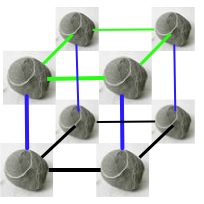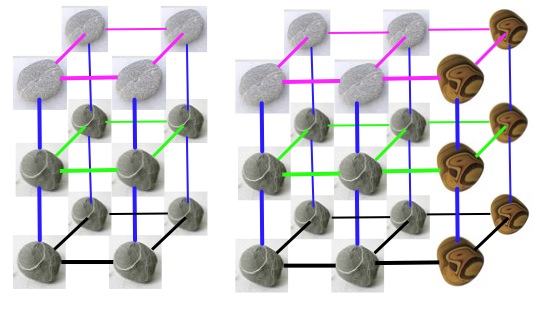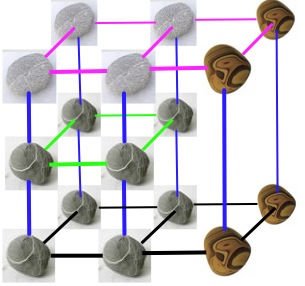Copyright © University of Cambridge. All rights reserved.
'More Pebbles' printed from https://nrich.maths.org/
Show menu
Why do this problem?
This activity is specially designed for the highest-attaining pupils that you ever come across. It acts as a further extension to Pebbles. It's an activity that is intended to give opportunities for those pupils to explore deeply using their
intuition, flair and risk-taking skills.
Possible approach
It may be appropriate to make sure that the pupils have experienced Pebbles first and then, as this is designed for the highest attaining, it might be presented as on the website or in a one-to-one situation, encouraging discussion between adult and pupil. This discussion could determine what kind of start suits the
learner, for example:
- maybe a model needs to be constructed,
- maybe a conversation about imagining it in the head,
- maybe a $2$D representation.
There are some kits with rods and balls that are magnets that could possibly be used to make the first models to help, as well as some construction materials that may usually be designed for the younger child.
There are some kits with rods and balls that are magnets that could possibly be used to make the first models to help, as well as some construction materials that may usually be designed for the younger child.
Key questions
Tell me about this/your thinking.
How are you calculating/measuring the volume?
How are you calculating/measuring the volume?


